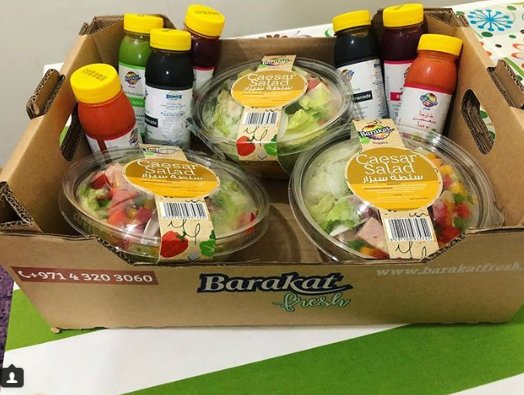In the breakneck tempo of our current era, ease translates to a more manageable day-to-day existence. The advent of digital provisions acquisition platforms has engendered an escape route from the irritations tied to visiting neighborhood food supply stores. Nevertheless, due consideration must be given to these applications’ implications on nature’s balance while utilizing them for their comfort factor.
This piece explores the impact of online food shopping on the environment and suggests ways to make it more sustainable.

The Convenience of Online Grocery Shopping Apps
Digital supermarket browsing platforms have completely refurbished our approach towards procuring edibles and daily necessities. By merely interacting briefly with their mobile screens, buyers can now traverse through an expansive array of commodities, requesting purchases, leading to a swift doorstep delivery of groceries. This amenity predominantly resonates among occupied individuals and familial units, substantially diminishing conventional grocery procurement’s temporal commitment and exertion.
Reducing Food Waste
One of the significant environmental benefits of online grocery shopping apps is their potential to reduce food waste especially of green vegetables like broccoli.
Traditional shoppers often make impulse purchases or buy items in excess, which can lead to food spoilage and waste. In contrast, online shoppers can carefully plan their purchases, review what’s already in their pantry, and avoid unnecessary buying, thus contributing to less food waste.
Lowering Carbon Emissions
Acquiring groceries via digital platforms may reduce environmental impact compared to several people operating their vehicles for store visits. The strategy wherein numerous orders are contained within a solitary delivery vehicle mitigates additional traffic, thereby diminishing the release of greenhouse gases linked with transportation processes.
Additional movements towards eco-consciousness can be observed in certain cyberspace grocery distribution corporations exploring sustainable conveyance alternatives such as electrically powered automobiles and bicycles.
Packaging Challenges
While online grocery shopping apps can reduce food waste of vegetables and fruits like eggplant and many more, they also introduce packaging challenges. Groceries need to be packaged securely to prevent damage during delivery, which often results in the use of single-use plastics and excess packaging materials. To address this issue, consumers can choose apps that prioritize eco-friendly packaging or actively reduce packaging waste. Additionally, recycling and upcycling packaging materials can help mitigate the environmental impact.
The Last-Mile Delivery Dilemma
Last-mile delivery, the final leg of the delivery process from the distribution center to the customer’s door, is one of the most environmentally challenging aspects of online grocery shopping. Delivery trucks make multiple stops, sometimes with just a single order, contributing to traffic congestion and emissions. To address this, some online grocery apps are experimenting with efficient routing algorithms and electric or hybrid delivery vehicles to reduce the environmental impact of last-mile delivery.
Supporting Local and Sustainable Options
Online grocery shopping apps can also promote sustainability by offering consumers the option to purchase locally sourced and organic products like parsley. Supporting local farmers and sustainable agriculture practices reduces the carbon footprint associated with distance transportation and encourages environmentally responsible farming methods.
Energy-Efficient Warehouses
The back-end operations of online grocery shopping apps, including order fulfillment and packaging, can also have environmental implications. Many grocery apps operate large warehouses to store and prepare orders. To reduce their carbon footprint, these facilities can be designed with energy-efficient features, such as LED lighting, smart climate control, and renewable energy sources.
Consumer Responsibility
While online grocery shopping apps have a role in reducing their environmental impact, consumers also have a responsibility. Here are some tips for environmentally conscious online grocery shopping:
- Choose Eco-Friendly Packaging: Opt for products that use minimal or recyclable packaging materials. Some apps provide eco-friendly packaging options.
- Consolidate Orders: Try to place larger orders less frequently to reduce the number of delivery trips.
- Support Sustainable Products: Select products labeled as organic, locally sourced, or sustainably produced to promote environmentally responsible practices.
- Recycle and Reuse: Recycle packaging materials and consider reusing items like shopping bags and containers.
- Consider Alternative Transportation: If possible, choose delivery time slots when the delivery truck will likely make multiple stops in your area, reducing its emissions per delivery.
- Provide Feedback: Encourage online grocery shopping apps to adopt more sustainable practices and packaging options by providing feedback and suggestions.
Conclusion
Online grocery shopping apps offer undeniable convenience with fresh and seasonable products like fresh orange, but their environmental impact should not be ignored. By being mindful of our shopping habits and encouraging responsible practices from online grocery providers, we can minimize the negative effects and make this modern convenience more sustainable.
As consumers, we must balance our desire for convenience with our responsibility to protect the environment for future generations.